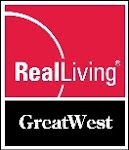WASHINGTON – Major mortgage service companies boosted the number of trial modifications they offered to distressed homeowners in August, the government reported Wednesday, but the workouts still cover only a small fraction of the delinquent loans that are eligible for help.
The Treasury Department released its second monthly report on loan modifications under the Obama administration's Making Home Affordable Program. It said that servicers had started 360,165 trial modifications through August, up by 124,918 from the modifications reported through July. The number of offers for trial modifications rose by 164,812, to 571,354 through August.
The total number of trial modifications started represented 12 percent of all loans that are 60 days late on payments and considered eligible for the Obama administration's program. That's up from 9 percent through the end of July.
"We think all the servicers could do more than they are doing now," Assistant Treasury Secretary Michael Barr told the housing subcommittee of the House Financial Services Committee on Wednesday.
The program is on track to meet its target of 500,000 trial modifications by November, Barr said. That number, however, is a small percentage of the more than 6 million potential foreclosures over the next three years that many analysts forecast.
Mortgage servicers, many of them large banks like Wells Fargo and Bank of America, are essentially middlemen that collect mortgage payments on behalf of investors who own securities backed by pools of mortgages. Although borrowers negotiate with servicers as if they were the lenders, the servicers represent the interests of investors, not homeowners.
From 2005 to 2008, servicers modified just 3 percent of all delinquent loans, according to documents reviewed by the House panel.
That low number led the Obama administration to create the servicer performance report, dubbed "Name and Shame," in a bid to pressure investors and servicers to do more. Forty-seven servicers now participate in the administration's program, up from 38 in July.
Wells Fargo and Bank of America improved on their July numbers but are still modifying a low percentage of eligible loans under the government program. Bank of America increased from 4 percent of eligible loans to 7 percent; Wells Fargo improved from 6 percent to 11 percent.
CitiMortgage, part of troubled Citibank, boosted its trial modification numbers to 23 percent of eligible loans in August from 15 percent in July. JPMorgan Chase, thought to be the nation's healthiest large bank, improved to 25 percent of eligible loans in August from 20 percent a month earlier.
The government's trial modification program seeks, through financial incentives to servicers and the investors they represent, to get borrowers into loans whose monthly payments are equivalent to 31 percent of their before-tax incomes.
Industry representatives said in testimony that their modification numbers were much higher than the report indicated, but there are no reliable breakdowns of individual servicer numbers to distinguish between, say, allowing a borrower to skip a payment vs. modifying an adjustable-rate loan into a low-cost fixed-rate mortgage.
"There may be other things going on out there, but to comply with our program rules and to count as a real modification you've got to get people down to an affordable (payment) level," Barr told McClatchy.
The administration will ratchet up pressure on servicers, he said, requiring new data on why loans weren't modified.
"We are requiring next month the implementation of denial codes by each servicer, and at that point we will be able to have good empirical data on reasons for denial," Barr said.
Representatives of JPMorgan Chase, Bank of America and Wells Fargo acknowledged in testimony that they fold legal fees and other foreclosure-processing costs into reworked loans, upping the balance that borrowers owe.
Only Wells Fargo said it had a special program to help borrowers with strong payment histories should they lose their jobs.
Bank of America's executive in charge of credit loss mitigation, Jack Schakett, acknowledged to the panel something long suspected but rarely spoken about publicly. Distressed borrowers who have equity built up in their homes, he said, are more likely to get foreclosed on, because there's a greater likelihood that servicers and investors who hold pools of mortgages will profit from the sales of the homes.
"The more equity that is in the house, the more the market will actually walk away with money, the less likely you will actually modify the loan," Schakett confirmed in an interview after the hearing.
Source Sac Bee
Subscribe to:
Post Comments (Atom)



No comments:
Post a Comment